From Garden to Table: Growing and Cooking with Your Own Spring Produce
Article posted in: Lifestyle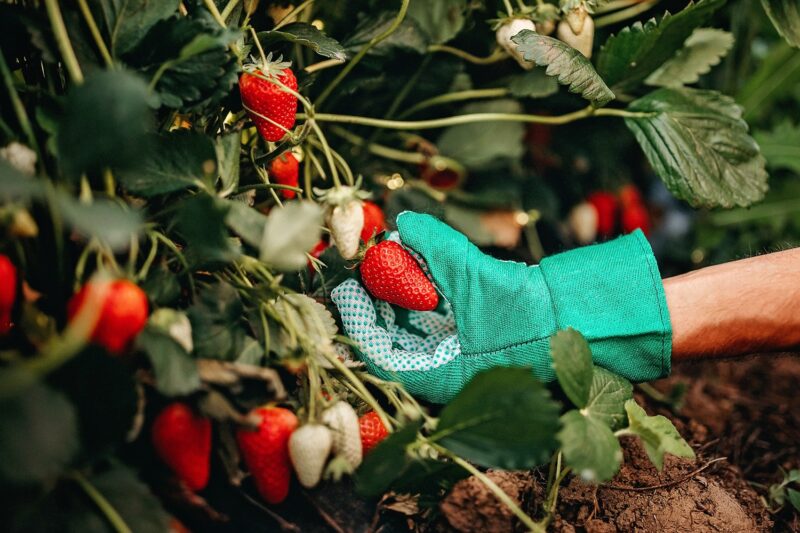
Step outside on a sunny day and savor the freshness of homegrown food. Whether you’re in a city or suburb, spring is perfect for growing your own fruits, veggies and herbs. Start with our beginner’s guide and useful resources, then use your harvest for nutritious meals that please your taste buds. Discover spring gardening tips in this comprehensive guide!
The Health and Environmental Benefits of Spring Gardening
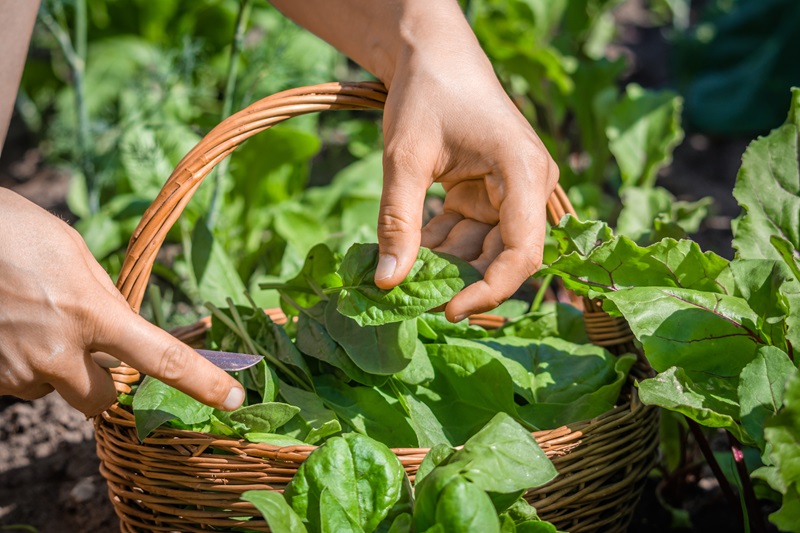
Physical and Mental Health Advantages of Spring Gardening
Gardening is good for you in many ways. You burn calories and tone your muscles while bending, digging, lifting, pulling and other spring gardening tasks. Caring for a garden reduces stress and anxiety, according to a report from the Mayo Clinic. For even more insights into how gardening improves your well-being, check out our story on the Surprising Benefits of Gardening.
Environmental Impact and Biodiversity
Growing your own produce reduces your “food miles,” or the distance your meals travel before you eat them. That’s beneficial for the environment, as fewer resources are used to transport the food to your table. Home gardens also support diverse ecosystems, supplying habitat and nourishment to worms and other soil-dwellers, bees and butterflies, reptiles and amphibians, birds, and other wildlife.
Dietary Benefits of Homegrown Vegetables
Many studies have found that people who grow vegetables tend to eat them more often and enjoy a wider variety of choices. Harvesting an abundance of fresh food may even inspire you to try new ways of eating it. As you have learned from Nutrisystem, vegetables are the foundation of a healthy diet and the fresher they are, the better they taste. Ripe produce plucked straight from the plant is at its peak of nutrition, too.
Raising a little of your own food is easy and fun. You don’t need a lot of space or hours of free time to grow a few plants that yield enough for you to enjoy just about every day. Dig into this handy beginner’s guide to planning, growing and cooking a garden full of healthy food, and you’ll be on your way to a bountiful spring.
How to Plan Your Spring Garden for Success
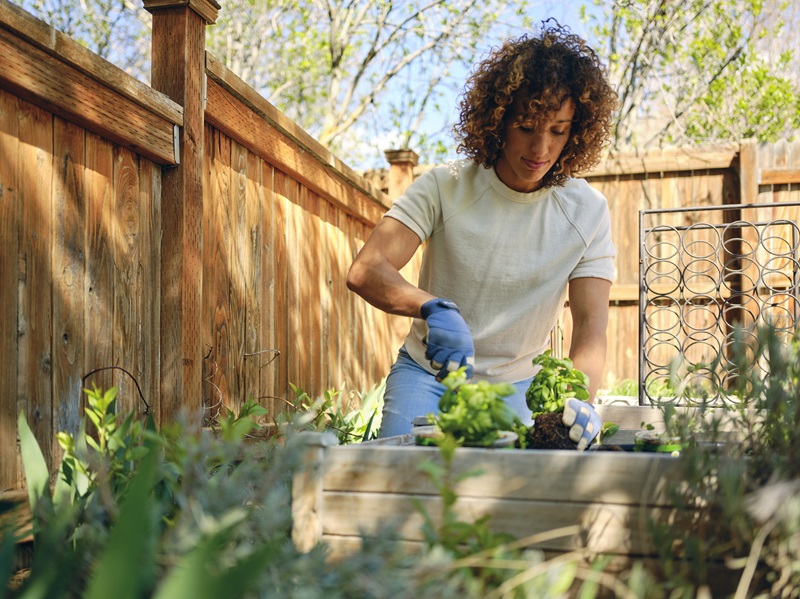
Selecting the Right Location
Your path to success with a vegetable garden begins with the crucial first step of choosing a suitable spot. If you give plants the right conditions, they are very likely to be healthy and productive. That starts with plenty of sunlight.
Plants such as broccoli, peas and strawberries need more than eight hours of direct sun during the peak of the growing season. With too little sunlight, the plants may grow but not yield much.
Crops with leaves that you eat, including lettuce, spinach and most herbs, produce well with just six hours of daily sun. If you don’t have a spot that gets enough sunshine in your yard, nearly all types of vegetables and herbs fare well in large containers that you can place where you have sufficient light.
Soil and Water Management
Choose a spot for your garden where water drains through the soil after a heavy rainfall. When the ground stays soggy for days on end, plants may drown in the excess moisture or suffer from fungal diseases that flourish in damp conditions.
Many experienced gardeners grow in beds where the planting area is pushed up 4 to 6inches above ground level. Raised beds shed rain quickly and they offer extra space for plants’ roots to spread out, which helps them grow stronger and more resilient.
To make a raised bed, mix a lot of compost into the soil. Compost also supplies natural nutrients for your plants. You can buy compost in bags at garden centers or, in many towns, get it free from a local site. If you want a frame around your raised bed, use untreated lumber, bricks, cement blocks or stones.
You don’t need a lot of space for a garden. In fact, it’s best to start your first garden at a modest size so you can learn about how much time and attention is needed before you dive in too deep. One 4-foot-by-8-foot bed is plenty of space to grow a few different crops that will provide you with fresh, homegrown food for most of the spring.
Spring Gardening: Choosing What to Grow
The best crops to plant in your new garden are the vegetables you like to eat most. Leaf lettuces, spinach, arugula and other salad greens thrive in the cool temperatures of spring. With these greens, you can trim off a few leaves to eat while the plant keeps growing new ones.
Broccoli, cabbage and kale fare best in chilly conditions, too. Radishes are one of the easiest and fastest crops. They can be ready to harvest in as little as 40 days after sowing the seeds.
Plant any type of peas in spring and you will be eating fresh pods as the days grow warm. Strawberries are one of spring’s sweetest treats and they’re productive in the ground or in a large pot. Plant them in early spring for harvest in late spring and early summer.
Herbs are a simple way to add fresh flavor to your meals every day. Plant cilantro, dill and parsley in the spring and snip the leaves as needed.
For your first garden, start with seedlings of leafy greens, broccoli, kale, cabbage, herbs and strawberries. You can find them in pots and six-packs at local garden centers and home stores.
Plant seeds of radishes and peas. Be sure to follow the directions on the plant tags or seed packets about the distance needed between plants. You can make your garden a little tighter if it’s small, but avoid overcrowding your bed, which may stunt the plants’ growth and leave them susceptible to problems.
Essential Garden Care and Maintenance Tips
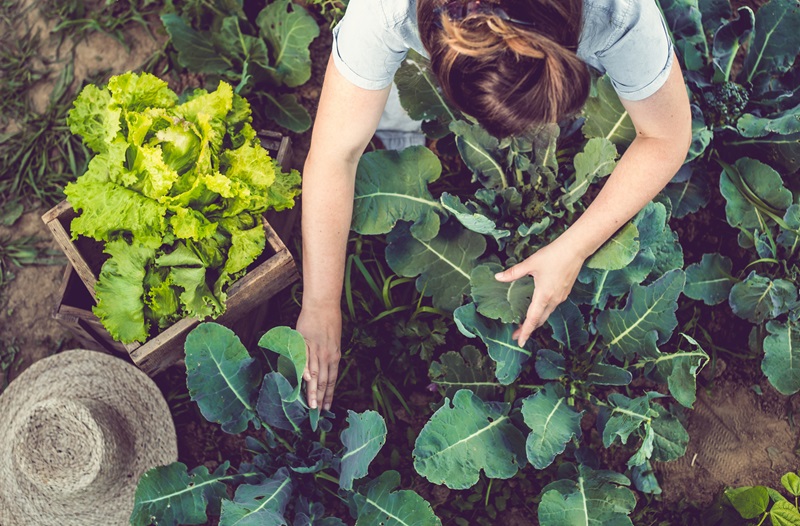
Watering and Moisture Control
Your newly planted seedlings and seeds need to be kept consistently moist but not soggy. That means sprinkling them every day or so when it doesn’t rain. After the plants have their first few leaves, water them only when the soil is dry. To determine if watering is needed, push your index finger into the soil down to the second knuckle. If you feel damp soil, hold off on watering. Too much water is just as likely to harm your plants as too little.
Plants drink from their roots, not their leaves, so you want to sprinkle water directly on the soil. Watering in the morning is ideal so the plants have a steady supply when the sun is shining. If you don’t have time in the morning, watering an hour or two before sunset in the evening will hydrate the plants for the next day.
Fertilizing and Plant Nutrition
As your plants begin growing, you can give them a boost of nutrients with fertilizer. Keep your homegrown veggies safe and pure by using only organic plant foods. Look for liquid fish-and-seaweed-based formulas, which are sold in most garden centers. You dilute them with water according to the package’s directions and give it to your plants once a week. Remember, overfeeding is no healthier for plants than it is for people.
Managing Weeds and Pests
Weeds compete with your crops for nutrients and water in the soil. The best way to minimize the weeds sprouting up in your garden is to cover all the space between plants with a layer of dried grass clippings, pine needles, or straw. The mulch blocks the sun from the weeds, and it also conserves moisture in the soil for your plants. Pull any weeds that break through the mulch when they are small and be sure to get out the roots so the weeds can’t regrow.
Insects are certain to show up in and around your garden. Believe it or not, that’s a good thing. Many of the insects you see are pollinators, which your crops need to produce food, while others such as ants and wasps, do nothing that affects your plants. Before you react to bugs around your plants, take time to observe them to determine what, if any damage, they are causing. If they aren’t noticeably harming your plants, you can ignore them.
Even if you do see pests feeding on your crops, you don’t need to break out a harsh pesticide. Birds feed on many of the pests. Invite your feathered allies to hang around your bed and eat pests by placing a bird bath or other water source nearby.
Aphids are tiny wingless bugs that suck the sap out of garden plants. When you see them clustered on your plants, get rid of them by washing them off with a strong stream of water. They can’t climb back up. In damp places, slugs may show up and feed on leafy greens. You can just pick them off and toss them into a bucket of soapy water.
In many areas, rabbits, groundhogs and deer do more damage to vegetable gardens than insect pests. If you notice that your crops are being eaten and don’t see bugs all over them, chances are wildlife is responsible. A fence made with simple metal posts and chicken wire will usually keep them out.
From Harvest to Kitchen: Maximizing the Use of Your Spring Produce
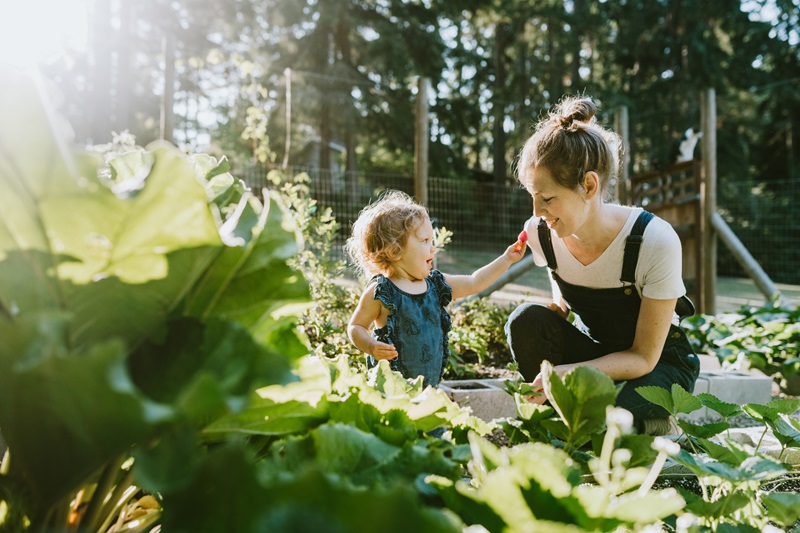
Harvesting and Storing Fresh Produce
Growing your own food lets you eat it at the peak of flavor and nutrition, so try to harvest just before you’re ready to prepare your meal. If you must keep some of your harvest in the refrigerator, don’t wash it and be sure it’s fully dry before storing it to prevent mold from growing.
Leafy greens and herbs such as dill and parsley also benefit from regular harvesting. Simply snip off the amount of leaves you want, taking no more than a third of the plant at a time. Give the plants a little fertilizer after harvesting and in a few days new growth will appear.
Cooking and Enjoying Your Homegrown Spring Produce
The most rewarding part of the effort you put into spring gardening is serving your lovingly tended crops in meals for yourself and your family. Your veggies will be so fresh and bursting with flavor that you’ll love eating them raw, moments after you’ve plucked them. Your homegrown veggies can also be essential ingredients in healthy Flex meals like these.
Simple and Healthy Recipes Using Spring Vegetables
- Teriyaki Shrimp Stir-fry features broccoli and snow peas along with shrimp, all in a sweet and savory sauce.
- With an abundance of kale from your spring gardening, you can make a batch of Crunchy Kale Chips, a healthy and satisfying snack.
- Add a little zing to your Nutrisystem Thick Crust Pizza with a light topping of fresh arugula.
- Your spinach boosts the flavor and nutrition of Nutrisystem’s Bistro-Style Toasted Ravioli in a tangy tomato sauce.
- Radishes are fun to dip and even better in our Creamy Radish Feta Dip.
- Once you’ve had your fill of strawberries straight from the vine, try our Cannoli Stuffed Strawberries. Serve them at a party and wow the other guests with the news that you grew the fruit yourself.
Further Learning
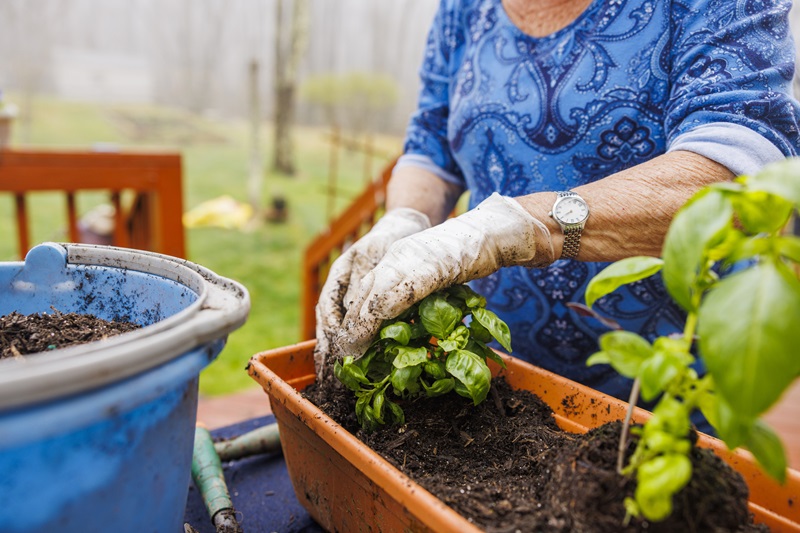
Expanding Your Gardening Skills
Planting your first garden opens the door for you to discover all the ways that raising food enriches your life, from the quality and variety of your meals to the simple pleasure of seeing your hard work come to fruition on your dinner table. Along the way, you’ll find that gardening is a learning experience that almost never ends. Each crop and each season present new challenges that keep you coming back for more.
While you might be tempted to plant every kind of vegetable and fruit you like, give yourself time to learn what works for you by starting with one bed or a few containers and a limited number of plants. You always can expand in future seasons as your knowledge and skills advance.
Resources for Continued Education
In the meantime, you can pick up pointers on getting started with our 10 Home Gardening Tips for Beginners. For a more in-depth reference, buy or borrow a copy of Rodale’s Basic Organic Gardening or Starter Vegetable Gardens. Both books provide ideas and information you can use in your first season and for years to come.
The National Gardening Association offers a comprehensive food gardening guide and an extensive database of frequently asked questions. In every state, the extension service gives valuable information free to home gardeners. The Farmer’s Almanac has a state-by-state listing so you can find your local office.
The most powerful gardening tool is your powers of observation. Spend a little time each day in your garden, looking closely at the plants and all the other living things around it. You’ll feel a real connection to your food and your environment. You’ll see them growing and bearing their harvest for you. And you’ll begin to imagine the meals you can make with your fresh, homegrown food.







